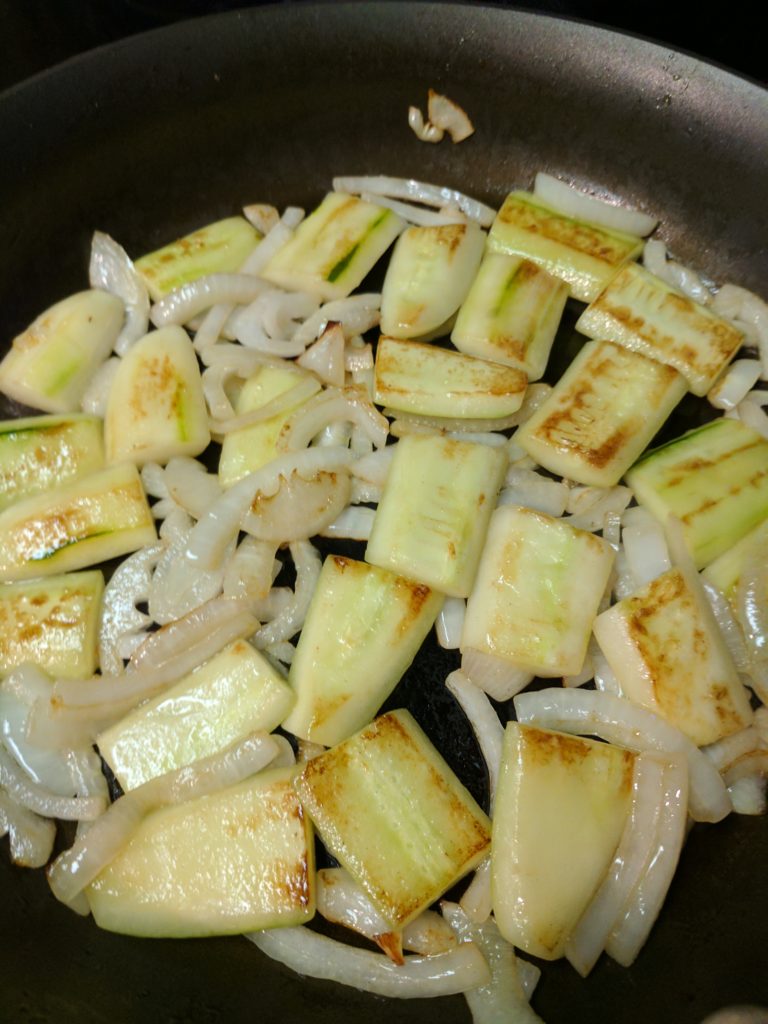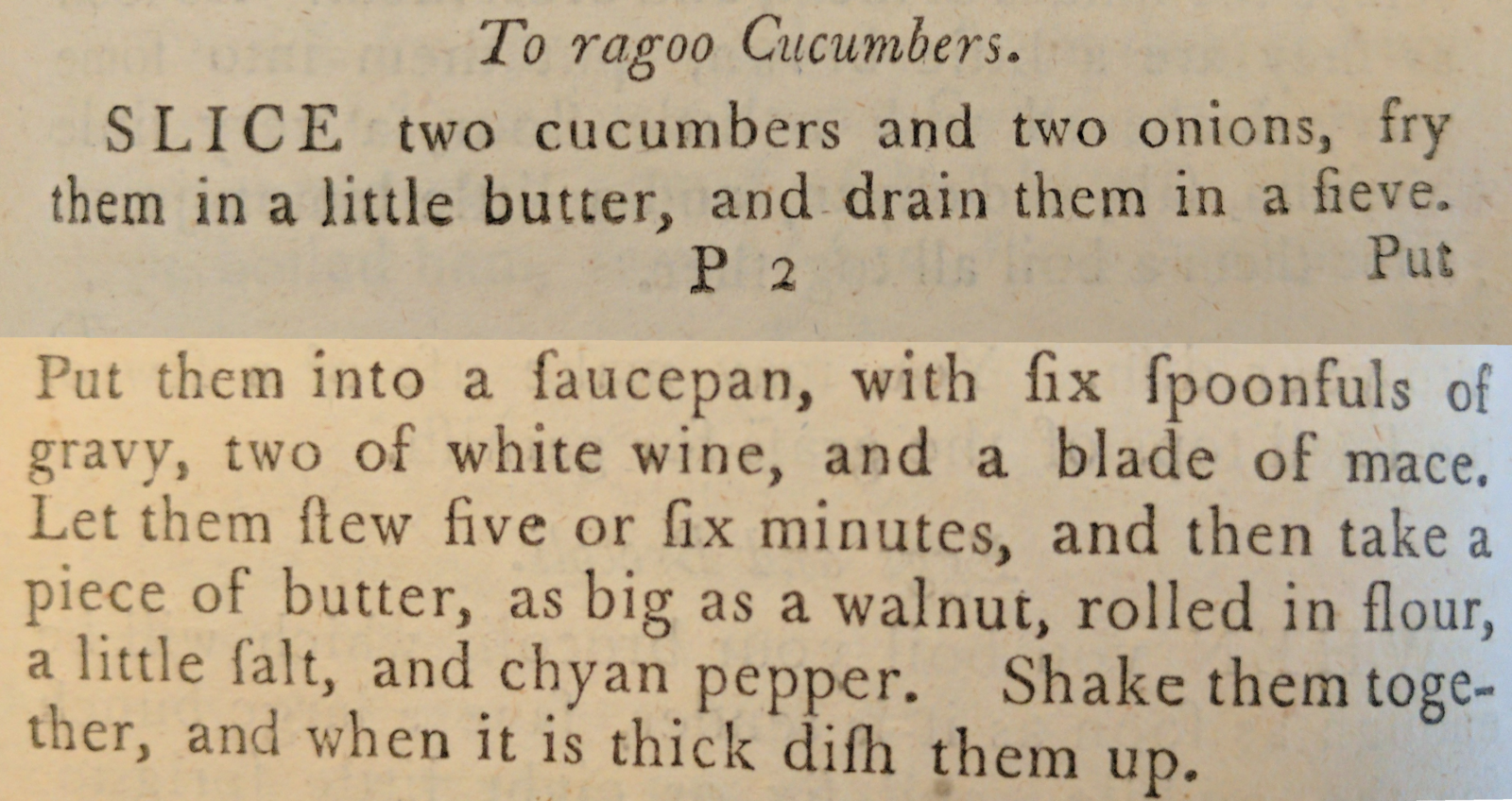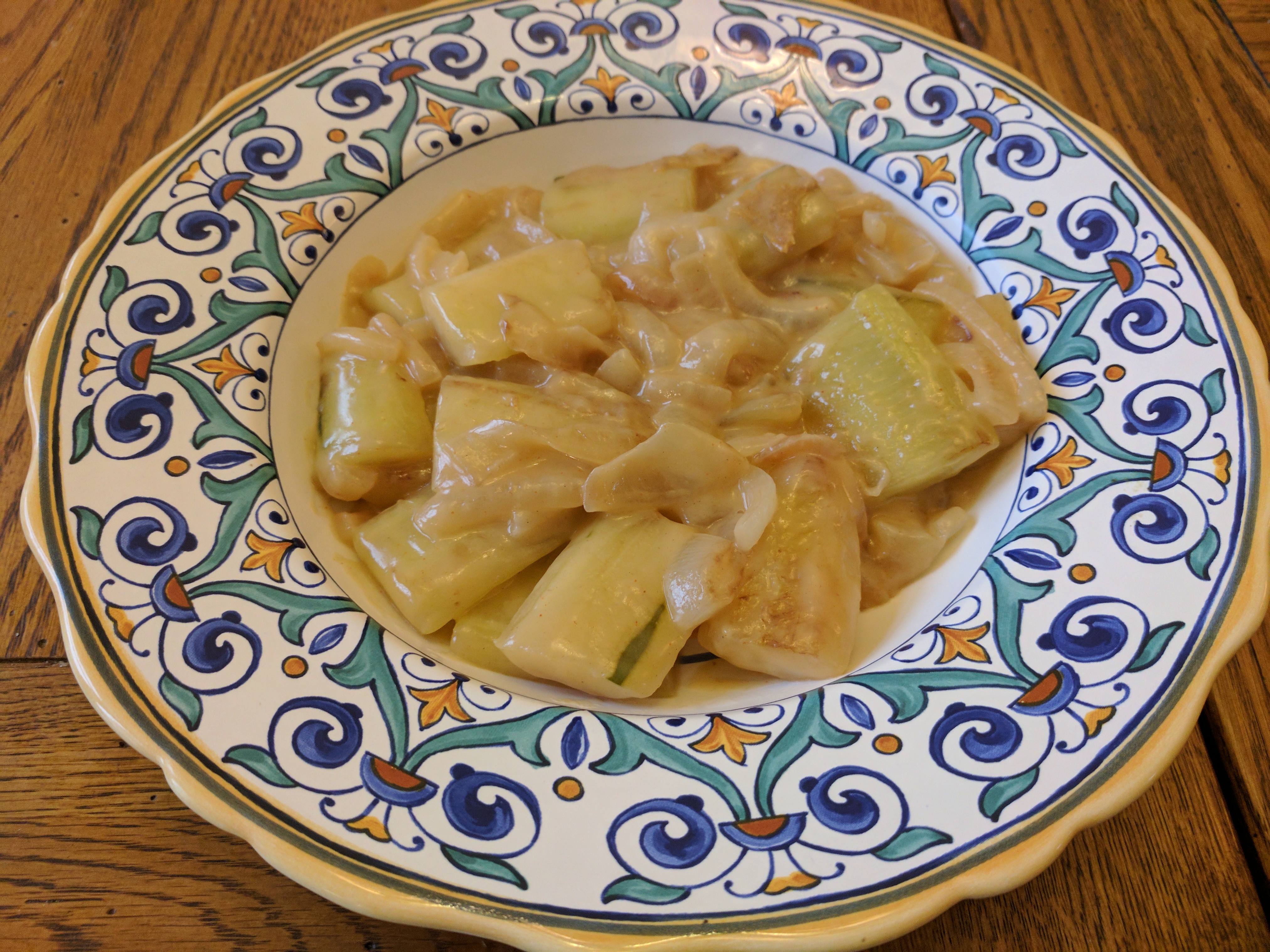In 19th century and earlier cook books, it is not unusual to see cooked dishes of cucumber as well as cold. This recipe comes from a late 18th century cook book “The Universal Cook”[1]
The flavor of this dish is unusual to modern tastes, so my first taste was “this is odd, good, but odd.” By the end of the meal, the opinion was a firm “I would definitely do this again.”
A few items of note here:
- You may notice that the instructions are a bit vague, and the measurements more so. The farther back in time you go, the less detail you find in recipes. As the wise man once said “it’s more like guidelines.”
- The original recipe just says to slice the cucumbers, no additional description. I chose to prepare them as I have seen in 19th century cookbooks. After making it, I realized that he probably did just slice them crosswise, and that’s why he drains them, because the center is mostly water. After considering it a while, I would continue to do it the way I did it this time.
- The original recipe also does not mention peeling the cucumbers. But it’s hard to know if he really didn’t, or if this is one of those assumptions so prevalent in early recipes. For me the decision was easy, the peels are bitter, and not pleasant, so away they go.
- Modern onions are a lot larger than their 18th and 19th century counterparts. This is why in my adaptation, it seems like I have decreased them. This is actually common for a lot of vegetables then vs. now.
- The original recipe calls for “gravy” in the ingredients. Gravy at that time was just the liquid left after cooking meat, not the thickened sauce made from it. So typically, this would have been made with whatever broth was available at the moment. In our case, chicken stock or a good vegetable stock works just fine.
- Blade mace is something that is uncommon today. High end spice dealers have it, but you’re very unlikely to find it in the grocery store. My links page has a couple sellers. Mace is an outer covering of the nutmeg. It has a similar, but much more “peppery” flavor. It was very common in early cooking. You can leave it out, but add black pepper if you do.
- The original recipe calls for “Chyan.” I really don’t want to admit how long it took me to realize that was just an earlier spelling of Cayenne. The author of this particular book used it a lot.
Who knew you could brown cucumbers?

To ragoo Cucumbers
Persons
2
Ingredients
- 2 Cucumbers (approx 1.5 pounds)
- 1 medium onion (approx 6-8 oz)
- 1-2 Tbsp butter
- 6 Tbsp broth or stock
- 2 Tbsp white wine
- 1 blade mace (or 1/4 tsp ground)
- salt
- cayenne pepper
- 1 Tbsp butter, near room temperature
- 2 tsp flour
Instructions
- Peel the cucumbers, cut in half crosswise, then in quarters lengthwise. Cut out the seeds, then cut the remaining pieces in 3 or 4 pieces.
- Quarter the onion, then slice.
- Add 1-2 Tbsp of butter to a skillet over medium heat, then add the cucumber and onion. Sautée until the onions soften and turn translucent, about 10 minutes. The cucumber should brown slightly.
- Transfer the cucumbers and onions to a colander or strainer, and let drain for a bit. Note that with the seeds removed, not much may drain. This can sit for a bit until you are ready to finish it.
- Roll the butter in the flour until most of it sticks. The easiest is to put the flour in a small bowl, form the butter into a smooth lump, then just toss the butter around in the bowl a little. The butter needs to be close to room temperature, or the flour won't stick.
- Add the stock, wine and mace to a large saucepan on medium heat, then add the cucumbers and onions. Add salt to taste, and a dash of cayenne, also to taste. Bring to a boil, then reduce to keep a simmer for 5-6 minutes.
- Add the butter and any loose flour, and stir until the mixture thickens. This will only take a couple of minutes.
- Transfer to a serving dish.
Notes
The stock or broth can be anything you have on hand, but chicken or vegetable broth is probably best.
[1]
J. W. Francis Collingwood, The Universal Cook. R. Noble, 1797.


